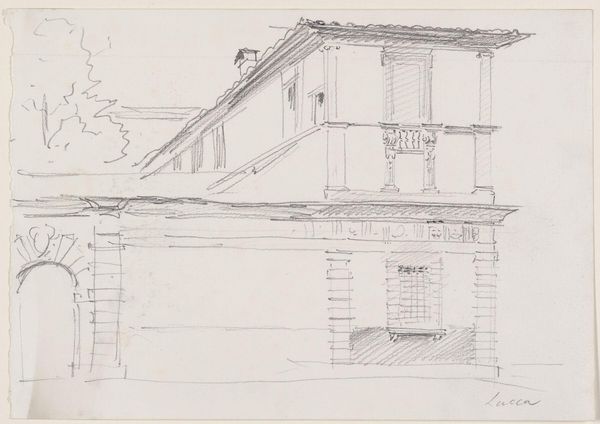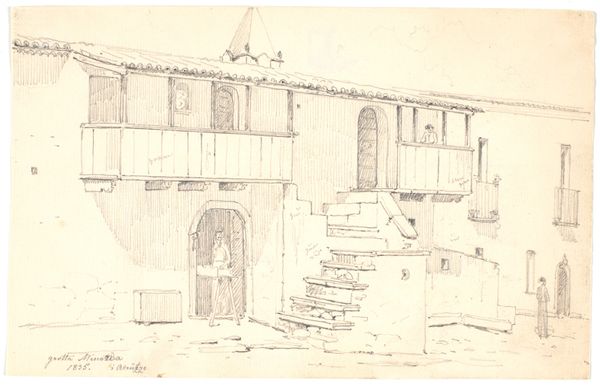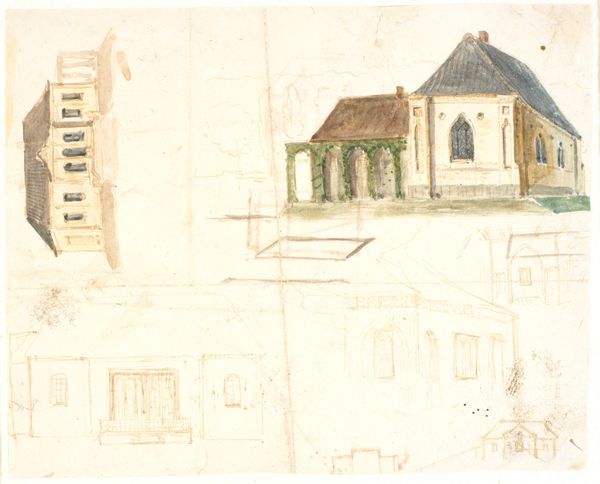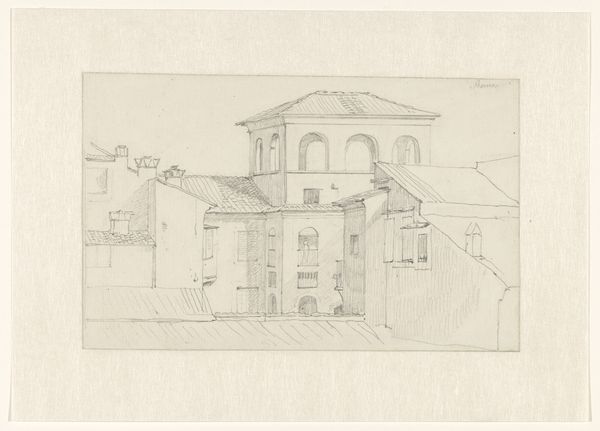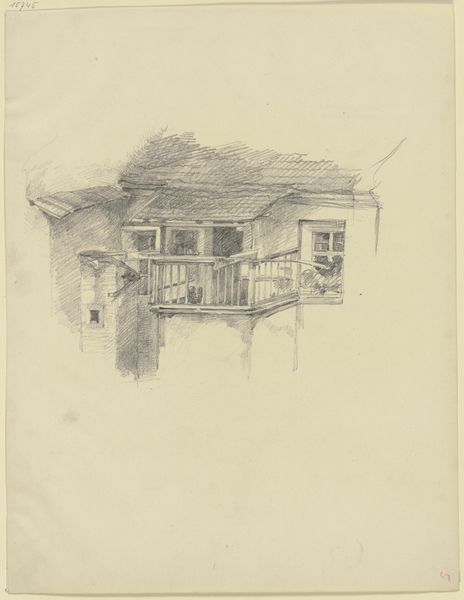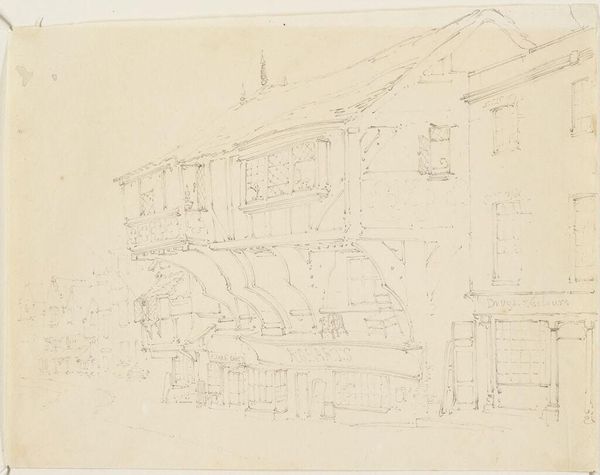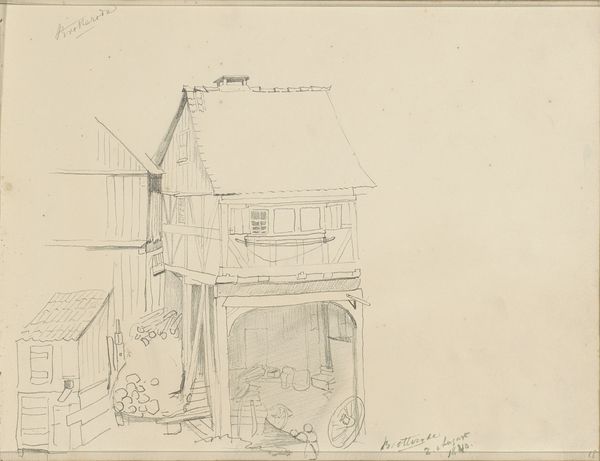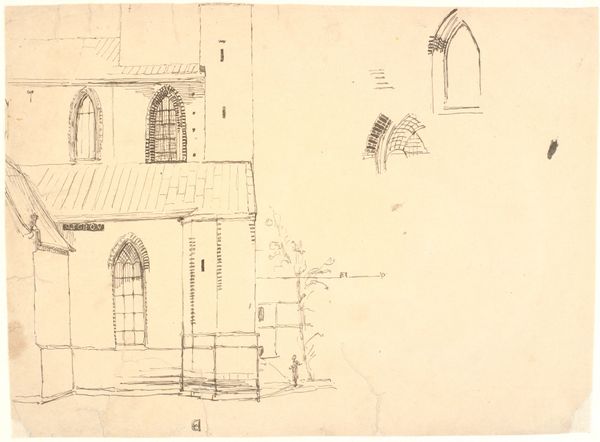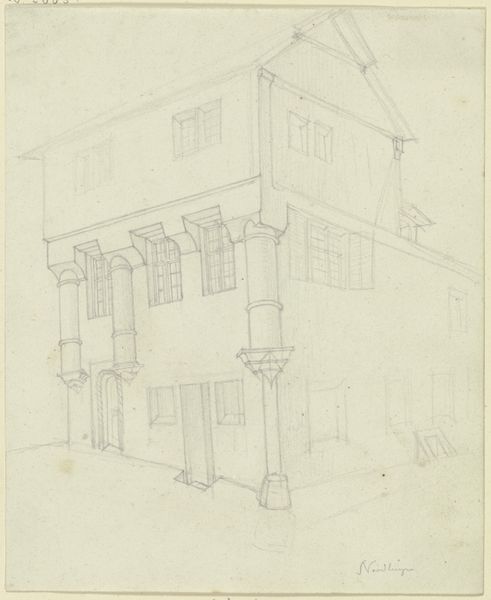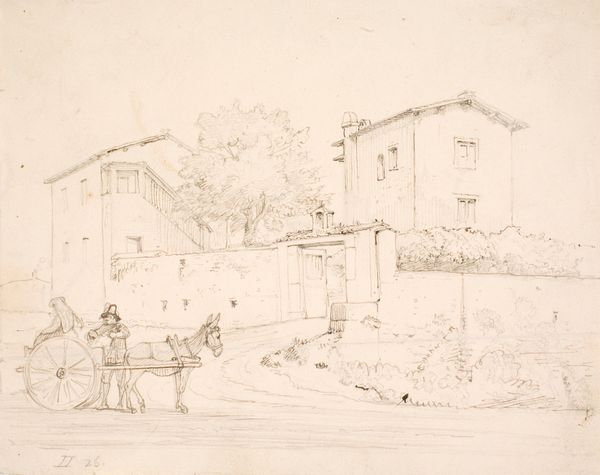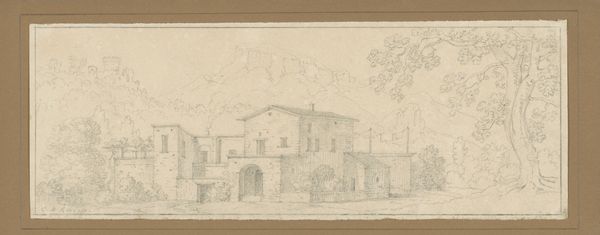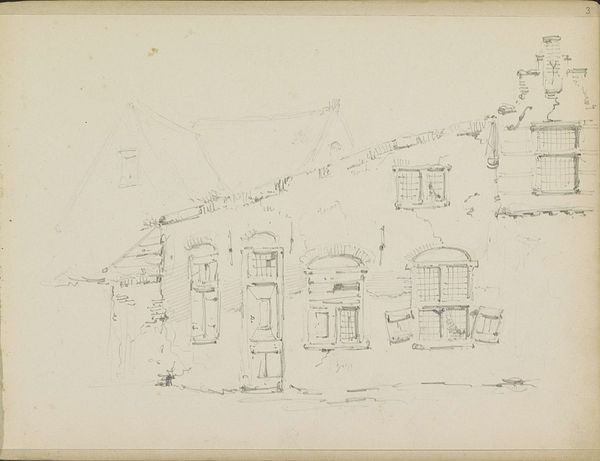
Bagsiden af det nu ødelagte hus i Nørregade nr. 15 i Odense. En tronende konge med scepter og sværd 1844
0:00
0:00
drawing, pencil
#
drawing
#
landscape
#
etching
#
romanticism
#
pencil
#
cityscape
#
realism
Dimensions: 186 mm (height) x 292 mm (width) (bladmaal)
Curator: Look at the tentative lines, the almost ghostly quality. It's both delicate and yet… melancholy. Editor: Yes, it has an understated power. This pencil drawing by Dankvart Dreyer, dating back to 1844, is entitled "The back of the now destroyed house in Nørregade no. 15 in Odense. A enthroned king with scepter and sword". It is interesting that Dreyer focused on what was seemingly insignificant or even vanishing. Curator: Fascinating title. Immediately, I wonder about that "enthroned king." Why place such a figure adjacent to a mundane, about-to-be-destroyed house? It pulls the image in several directions all at once: domesticity, ruin, history and even royalty all vying for prominence. Was it about challenging power structures? Highlighting social inequalities, maybe, with the decaying building reflecting neglect. Editor: It could be a deeper comment on legitimacy, though perhaps unconscious. Royalty—the symbols, at least— persist even as the physical structures of daily life decay. Consider, too, the subtle interplay between the "realism" of the architectural study and the romanticised, almost fairytale king, hovering almost translucent, to the right of the house; the choice in making the figure in a such a different texture than the home gives them more weight. The symbol overpowers. Curator: The transparency definitely affects how we view it, a faint memory versus concrete… almost violently destroyed domestic spaces. And, thinking about the materials he uses, and even the destruction itself: Did this act itself constitute a commentary against what these structure stood for? This interplay between drawing and political acts reveals a lot about Dreyer's awareness. Editor: These houses held a certain significance; their presence in urban memory can be explored as potent vessels of cultural continuity. I see the king as not merely political but archetypal. Perhaps this image wants to capture, not an actual person, but a symbolic resonance—the endurance of certain mythologies embedded within the national consciousness. This blending of historical record with potent imagery underscores its value beyond its mere documentation of a place. Curator: A poignant meditation, linking a specific moment of loss to the broader, perhaps ongoing negotiation of social spaces, class, and legacy. Editor: Exactly, it transcends documentation, becoming a resonant symbol of time and impermanence, of shifting meanings.
Comments
No comments
Be the first to comment and join the conversation on the ultimate creative platform.
